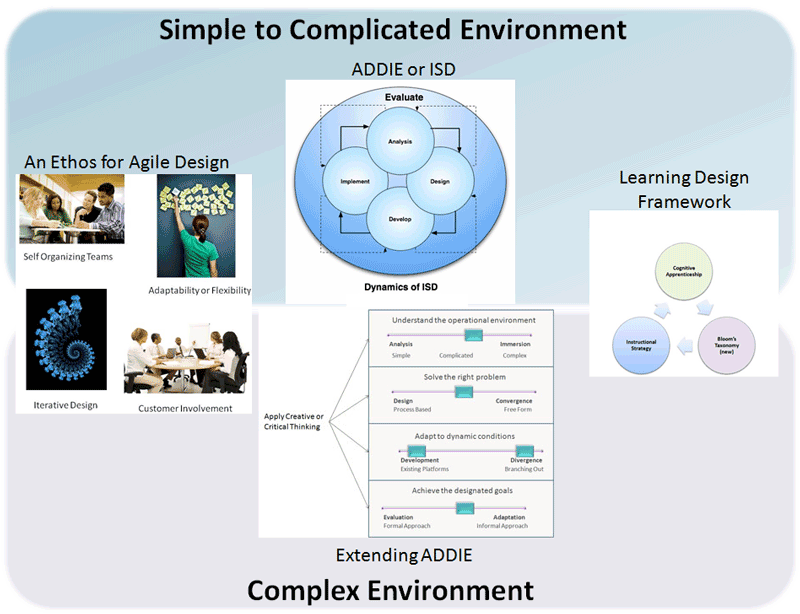Note: This site is moving to KnowledgeJump.com. Please reset your bookmark.
Performance Gaps and Measurements
Basically, a performance gap is the difference between the actual or present performance and the optimal or future performance:

Some performance gaps are quite easy to measure. For example, if the standard is to dig a ditch 2 feet wide and 2 feet deep, but it is only dug 1 1/2 foot deep, then there is a performance gap of what the depth is and what it should be. If the ditch-digger does not know how to dig a ditch two feet deep, then it is a training problem. If the ditch-digger knows how, but did not do it, then it is some other type of performance problem.
Measuring Performance Gaps
In a performance analysis for the present, you subtract the present behavior (B) from the desired standard (S) to measure the performance gap (G). This measurement, S - B = G, becomes the span that must be bridged in order to reach the objective.
To plan for future requirements (visioning), you determine where you are now (the present behavior (B)) and where you want to go (the future standard (S)). Again, the difference between B and S is the performance gap (G).
Although the second measurement is on a larger and more vague scale, both cases require that you determine where you are, where you want to go (analysis an planning), creating the framework (design or blueprint), and then building the structure (development) to bridge the gap.
Thus, you look at business needs first, such as the business unit's needs, mission statements, the leader's vision, and goals. Next, determine what the present performance level is. The difference is the gap or needs. You now create the criteria that must be met in order to show that you have bridged the gap.
Soft Skills
Some of the more difficult tasks to train and measure are soft skills, which include the affective domain. These address the manner in which we deal with things emotionally, such as feelings, values, appreciation, enthusiasms, motivations, and attitudes. These traits are not observable, therefore a representative behavior must be measured. For example, we cannot tell if a worker is well motivated by looking at her, but we can observe some representative behaviors, such as being on time, working well with others, performing tasks to standards, etc.
Probably two of the most trained soft skills are customer service and teamwork. In customer service training, you want to measure the customer's attitude, especially the two most important questions:
- Will you purchase our product or service again?
- Will you recommend our product or service to your friends and family?
These customer surveys can then be directly correlated with the employee's performance, and most importantly, the bottom line. Be careful when measuring a performance gap with an indirect survey instrument. Although you can tell if the customers' survey responses are below standards, you cannot always easily tell what remedy to apply. Once the initial surveys are in, then you should select a small representative group of customers to survey in depth. This will help you to pinpoint the root problems.
The type of team training will indicate the type of performance to measure. For example, in initial team training, going from groups to teams, with the primary goal being to increase performance (accomplish more with the same number of people) by boosting morale, esprit de corps, and the value of diversity. Here, you would measure a process before and after the training, with the time it takes to perform the process being the metric. The bottom line or performance gap would be the increase in production.
Development
In more advance team training and soft skill concepts, you are going from training to development. That is, you are training people to acquire new horizons, technologies, or viewpoints with the goal being able to do more with less and increase creative problem solving abilities. Unlike training, which can be fully measured, development cannot always be fully evaluated due to the complexity of the skills received and used. Does that mean you do not do development programs? No. Good development programs affect an organization's climate and culture, which can give an organization a competitive edge. And there is not one Fortune 500 company out there that does not want to increase its performance over its competitors.
Trainers and leaders must often use their gut-level instincts when choosing development programs to implement since the data supporting them will often be vague. The measurement of these programs are often attitude surveys performed before and after implementation. Since attitudes often change on a day-to-day basis, several surveys have to be performed throughout a given period.
When designing and measuring these development programs, training companies and consultants will often perform the service for free, in exchange for the data and testimonials they will receive. The data and testimonials are then used to convince other companies to pay for the service. The investment to build such programs can be quite heavy due to the number of surveys and free implementations required, but the pay-off can be quite handsome if it is picked up by several high-profile organizations.
This is where trainers and leader's gut-level instincts come into play - organizations who receive these free programs often feel quite honored that they were chosen...and it is hard to bad-mouth someone when you feel this way so glowing reviews are often given. It is important that you fully evaluate their programs.
Reference
This article is based on a series of postings to the TRDEV-L Discussion List. It was later published in the February 1999 issue of ASTD's Pittsburgh newsletter.



